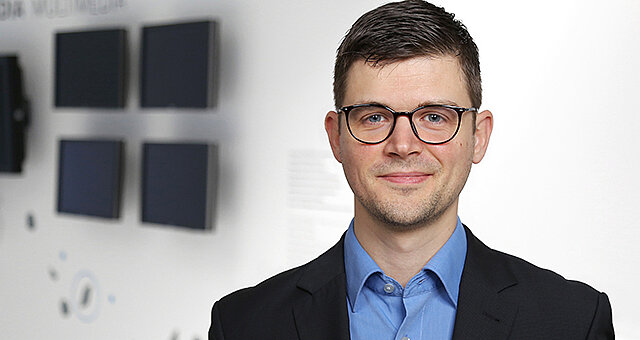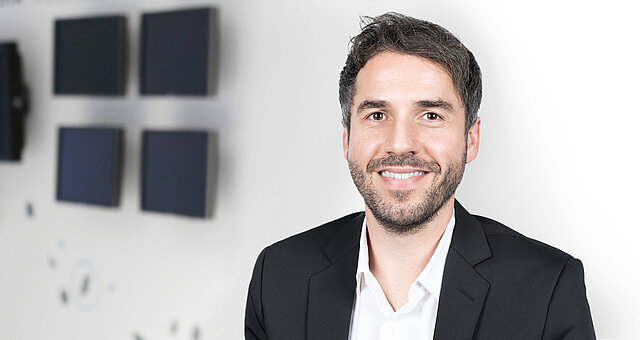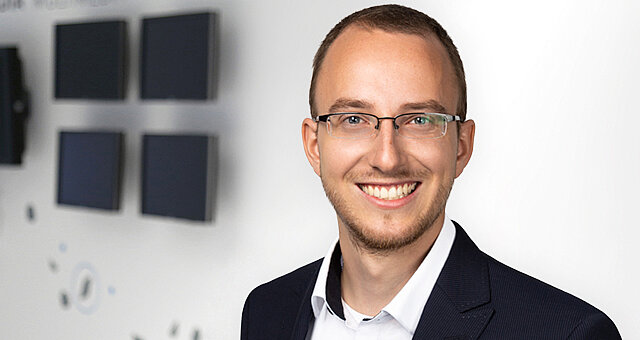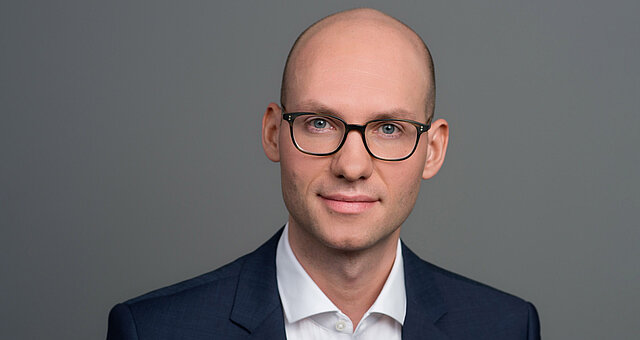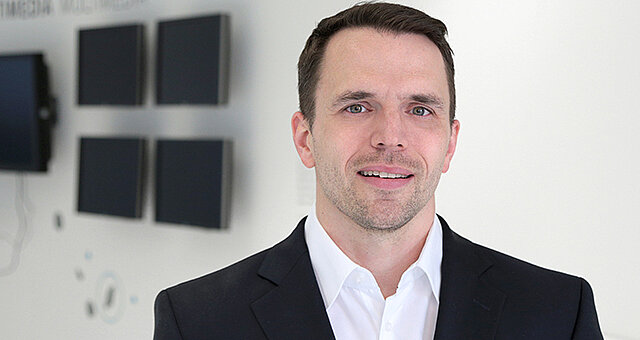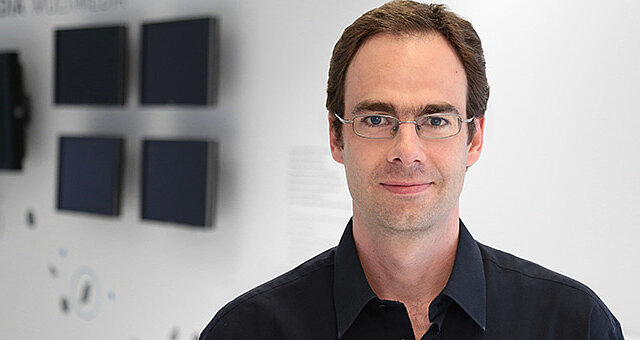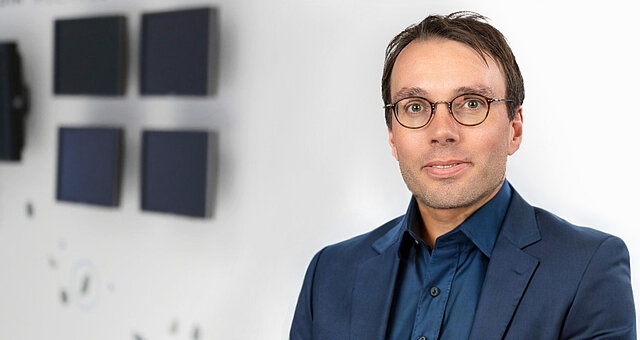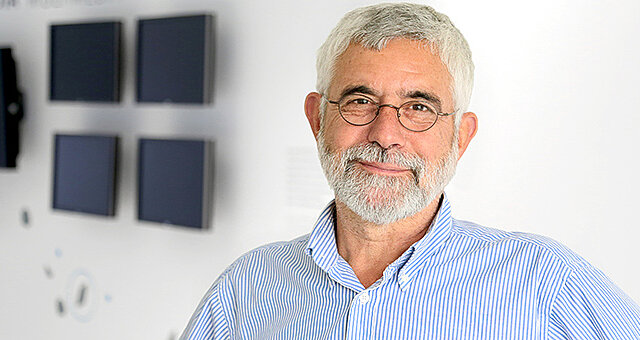Photonics West 2023
JAN - FEB 2023
31 - 2
San Francisco, USA

The Fraunhofer Heinrich Hertz Institute, HHI, is a world leader in the development for mobile and optical communication networks and systems as well as processing and coding of video signals. Together with international partners from research and industry, Fraunhofer HHI works in the whole spectrum of digital infrastructure – from fundamental research to the development of prototypes and solutions.
At Photonics West 2023, Fraunhofer HHI presents the latest developments in Photonic Components, Networks and Systems as well as Fiber Optical Sensor Systems at the German Pavilion, Booth 4105-30 from January 31 - February 2 in San Francisco, USA.
Hybrid PICs

Quantum-on-a-PIC
The PolyBoard platform enables the the hybrid integration of active and passive optical functionalities into complex photonic integrated circuits. Building blocks include tunable lasers at VIS and NIR wavelengths, thin film filters for polarization and wavelength handling, and isolators/circulators. Integration of nonlinear materials enables quantum applications like photon pair generation and SPDC.
PIC Evaluation with PIConnect
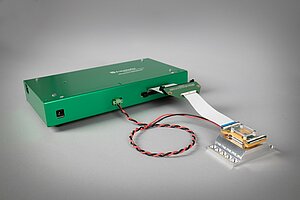
A portable PIC evaluation setup for fast and convenient prototype development
PIConnect , Fraunhofer HHI’s plug and play PIC evaluation setup, integrates 4 laser drivers, 1 TEC, and 8 current and 8 voltage sources. The PIC is mounted and connected on the integrated PIConnect submount. The system enables parallel operation of multiple building blocks and replaces 21 discrete controllers.
Terahertz power raised to 970 µW
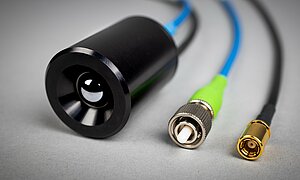
Terahertz systems for sensing and wireless communications
We present the newest generation of fiber-coupled terahertz modules for application in spectroscopy and non-destructive testing as well as 6G communications.
Our newly developed semiconductor layers make it possible to raise the terahertz output power to 970 µW and thus increase the dynamic range. This can lead, for example, to a significant improvement in the reliability of thickness determination of very thin layers.
With 6G wireless communications another new and rapidly growing field of application emerges. Using optoelectronic conversion, our terahertz modules allow complex optical modulation formats (e.g. quadrature amplitude modulation) to be transferred to wireless communication channels at carrier frequencies from 100 GHz to >500 GHz. This was used to demonstrate a data rate of up to 160 Gbit/s in the 300 GHz band.
High-Speed Photodetector Modules
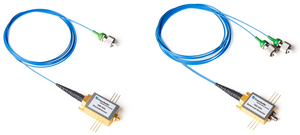
Components for 1Tb/s Transmission and Microwave Photonics
Fraunhofer HHI provides single and balanced photodetector modules with a bandwidth up to 145 GHz operating from the O- to the L-band. The intended application for the modules is test and measurement. For microwave photonics dedicated high-power photodetector modules are available.
Indium-Phosphide Mach-Zehnder Modulator
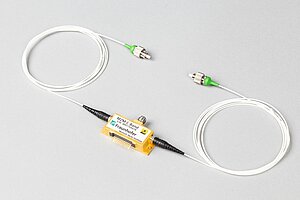
C- & O-Band High-Speed Modulator
InP Mach-Zehnder modulator with high bandwidth for C- & O-band applications. The intended applications for the modules are test and measurement for 100 GBaud communication and microwave photonics.
Demo: Optical beam steering with PolyBoard 2D phased array
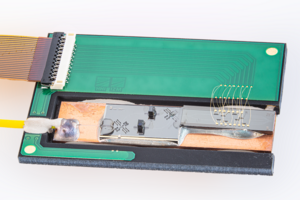
Applications: Lidar sensing, beam steering & combining
We present a 2-dimensional optical phased array (OPA) realized with a 3-dimensional PolyBoard chip. Beam steering was demonstrated with an initial 2x4 array. Without any front lens, the maximum steering angle is about 10°. This technology can scale up to 32x256 arrays. The OPA module is coupled to a standard single-mode fiber and a ribbon cable for beam control.
Time to digital converter with sub nanosecond resolution
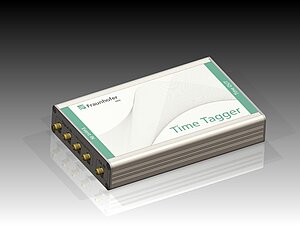
A versatile measurement device for digitizing events in time domain with a resolution down to 0.1 nanoseconds.
Fraunhofer HHI’s Timetagger is a versatile measurement device with multiple input channels allowing digitizing the time of events with a resolution of 100 ps. Switching threshold and hysteresis could be set for any input channel. The digitized events could be read by a network interface.
3D shape sensing foil
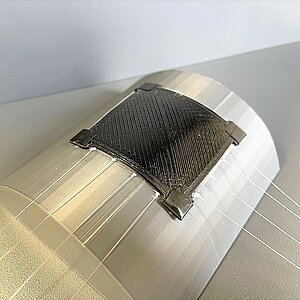
3D shape sensing using ultra-thin glass for e.g. flexible X-ray detectors
Based on optically integrated structures, a sensor in ultra-thin glass is presented which reports the 3D shape reliably and reproducibly. When mounting the sensor on a surface, no extra calibration is necessary.
Paper presentations with participation of Fraunhofer HHI
Ahmad Abdalwareth (Fraunhofer HHI)
Optical evanescent-wave hydrogen fiber sensor based on Bragg grating coated nanoparticles
January 29, 2023 from 5:00 PM to 5:20 PM (PST)
Ahmad Abdalwareth (Fraunhofer HHI)
Apodized plane-by-plane written chirped fiber Bragg gratings in polarization-maintaining fibers for dispersion adjustments in all-fiber ultrafast lasers from Fraunhofer Heinrich Hertz Institute
January 30, 2023 from 1:30 PM to 1:50 PM (PST)
Milan Deumer (Fraunhofer HHI)
Purely photonic wireless link at 120 GHz carrier frequency enabled by heterodyne detection with a photoconductive antenna
January 30, 2023 from 1:40 PM to 2:00 PM (PTS)
Benjamin Willenberg (ETH Zurich)
Rapid THz-TDS enabled by single-cavity solid-state GHz dual-comb oscillator
January 31, 2023 from 8:20 AM to 8:40 AM (PST)
Adam Raptakis (National Technical Univ. of Athens)
Fully integrated Laser Doppler Vibrometer (LDV) based on hybrid 3D integration of silicon nitride and polymer photonic circuits with operation in the kHz regime
January 31, 2023 from 8:40 AM to 9:00 AM (PST)
Nikolaos Lyras (Institute of Communication and Computer Systems, Greece)
Photonic integrated circuits for 5G-and-beyond networks: enabling the mmWave band and beyond with InP-based photomixers in integrated transceivers
January 31, 2023 from 8:45 AM to 9:00 AM (PST)
Gayatri Vasudevan Rajeswari (Fraunhofer HHI)
Novel >57GHz bandwidth O-band InGaAlAs MQW RW Dual DFB
January 31, 2023 from 11:50 AM to 12:10 PM (PST)
Sarah Cwalina (Fraunhofer HHI)
Coherent LiDAR with 2D quasi-static MEMS mirror scanning
January 31, 2023 from 1:50 PM to 2:20 PM (PST)
Nicolas Perlot (Fraunhofer HHI)
18km bidirectional free-space optical link with multi-aperture antenna and DWDM SFP+ transceivers (VERTIGO project)
January 31, 2023 from 4:30 PM to 4:50 PM (PST)
Jannis Koch (Fraunhofer HHI)
3D shape-sensor based on integrated optics in ultra-thin glass
February 1, 2023 from 6:00 PM to 8:00 PM (PST)
